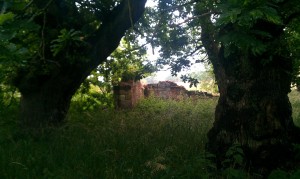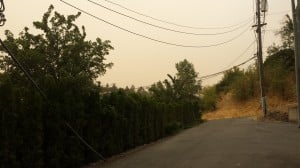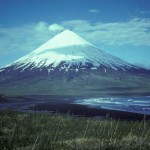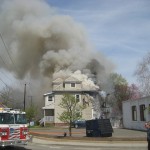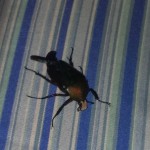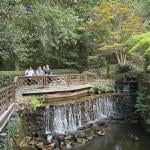 Last week I took a short, unplanned holiday to Edinburgh. I spent Wednesday in the Old City right next to Waverley Station where my train from Glasgow arrived. I enjoyed a museum visit, an art gallery, and some leisurely book store browsing. In the evening I headed to Dalkeith where I stayed Wednesday and Thursday nights, allowing me to spend Thursday and Friday hiking through the village of Dalkeith and through the forest in Dalkeith Country Park.
Last week I took a short, unplanned holiday to Edinburgh. I spent Wednesday in the Old City right next to Waverley Station where my train from Glasgow arrived. I enjoyed a museum visit, an art gallery, and some leisurely book store browsing. In the evening I headed to Dalkeith where I stayed Wednesday and Thursday nights, allowing me to spend Thursday and Friday hiking through the village of Dalkeith and through the forest in Dalkeith Country Park.
The three days of walking around with a heavy backpack left my body quite sore, but my spirit invigorated. Each night I slept like a rock — a very happy rock — exhausted from the day’s explorations.
Thursday’s hike through Dalkeith Country Park was certainly the highlight of the week. It seems, in hindsight, as if all my other wanderings on the trip were just a lead up to that hike or a reflection on it. On Thursday morning, as I sat eating breakfast in the restaurant next to the hotel where I was staying, I looked at a map of the area on my tablet. The area has a cluster of villages, numerous small parks, and some fairly decent sized swaths of forest as well as grazing land and farm fields. One of the great things about being in the UK in general is the accessibility of the walking paths in areas like this, and Scottish rural access seems to be even more open than England’s. I didn’t know exactly where I would go for the day, but as I looked over the map I saw a large patch of forest I wanted to go explore.
I set off on Bonnyrigg Road which turned into Eskbank Road which in turn became the Dalkeith High Street. Onward, to the end of the street, and at last I arrived at the gates of the Dalkeith Country Park. The day was a bit grey and I didn’t see another person on the trails the entire time I was there.
Shortly after I walked past under a bridge that separated manicured lawns from the forest, there were obvious signs that many trees had been cut down recently. I had mixed feelings walking through that space. Whatever the reason for the culling, they had not clear cut the trees as I’ve seen so many times in the forests of Idaho and Eastern Washington. I walked quietly, reaching out with both my feelings and my intellect, watching, listening, trying to understand the space and the relationship between humans and the wilderness.
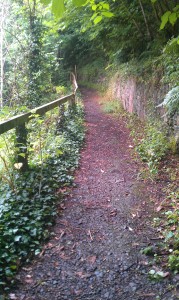 Of course, a park like this one is not really wilderness. With some notable exceptions, most of the “wild” places of the UK are not, in fact, wild, but carefully tended spaces where humans interact with the environment in a manner intended to preserve the illusion of wilderness. To find something really wild, where the non-human inhabitants have more control that the human ones, I would have to go much further North.
Of course, a park like this one is not really wilderness. With some notable exceptions, most of the “wild” places of the UK are not, in fact, wild, but carefully tended spaces where humans interact with the environment in a manner intended to preserve the illusion of wilderness. To find something really wild, where the non-human inhabitants have more control that the human ones, I would have to go much further North.
Later in the day, I learned from trail markers at the other end of the park that this forest is a commercial wood farm. The trees in that first section of wood must have been cut down for sale, whether for paper or lumber, I do not know.
I only walked one of many well worn paths through that forest. I didn’t cross the Esk, but only walked along side of it. I watched some cows grazing in a field inside the park, as I walked the path that ran along the outside of their pasture. When I got hungry, I sat on a tree stump sticky with sap, and watched the river while I ate the sandwich I’d packed. Farther along the path there were more signs of the human history of the estate. Oak trees had much thicker bases than tops, signs that the wood had been harvested in the past by cutting the tops and leaving the tree to regrow from beheaded trunk. In a few places along the path there were bits of old buildings.
In one spot I saw trees growing out of what looked like a very old stone retaining wall pressed against a small hillock. The stones no longer formed a solid wall, but were pressed apart by the earth and the tree roots, one large trunk coming out near the top at an angle and then rising up toward the sky. Humans may manage the land with the utmost care, but the plants and wild animals are never completely under human control.

